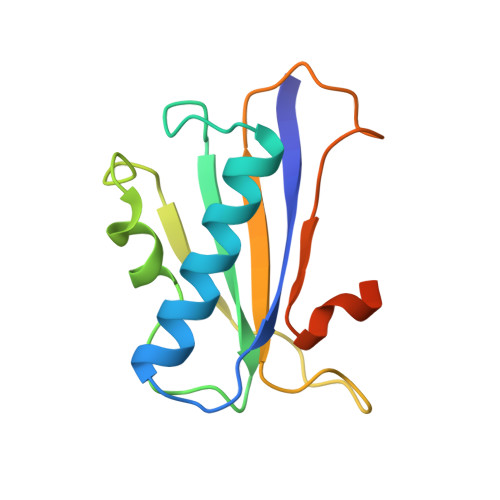The monofunctional chorismate mutase from Bacillus subtilis. Structure determination of chorismate mutase and its complexes with a transition state analog and prephenate, and implications for the mechanism of the enzymatic reaction.
Chook, Y.M., Gray, J.V., Ke, H., Lipscomb, W.N.(1994) J Mol Biology 240: 476-500
- PubMed: 8046752
- DOI: https://doi.org/10.1006/jmbi.1994.1462
- Primary Citation of Related Structures:
1COM - PubMed Abstract:
Structures have been determined for chorismate mutase from Bacillus subtilis and of complexes of this enzyme with product and an endo-oxabicyclic transition state analog using multiple isomorphous replacement plus partial structure phase combination and non-crystallographic averaging. In addition to 522 water molecules, the model includes 1380 of the 1524 amino acid residues of the four trimers (each containing 3 x 127 amino acid residues) in the asymmetric unit. Refinement to 1.9 A resolution yields 0.194 for R and r.m.s. deviations from ideal values of 0.014 A for bond lengths and 2.92 degrees for bond angles. The trimer resembles a beta-barrel structure in which a core beta-sheet is surrounded by helices. The structures of the two complexes locate the active sites which are at the interfaces of adjacent pairs of monomers in the trimer. These structures have been refined at 2.2 A to a crystallographic R value of 0.18 and show r.m.s. deviations from ideal values of 0.013 A for bond lengths and 2.84 degrees or 3.05 degrees for bond angles, respectively. The final models have 1398 amino acid residues, nine prephenate molecules and 503 water molecules in the product complex, and 1403 amino acid residues, 12 inhibitor molecules and 530 water molecules in the transition state complex. The active sites of all three of these structures are very similar and provide a structural basis for the biochemical studies that indicate a pericyclic mechanism for conversion of chorismate to prephenate. The absence of reactive catalytic residues on the enzyme, the selective binding of the single reactive conformation of chorismate, the stabilization of the polar transition state, and the possible role of the C-terminal region in "capping" the active site are factors which relate these structures to the million-fold rate enhancement of this reaction.
- Department of Chemistry, Harvard University, Cambridge, MA 02138.
Organizational Affiliation:

















